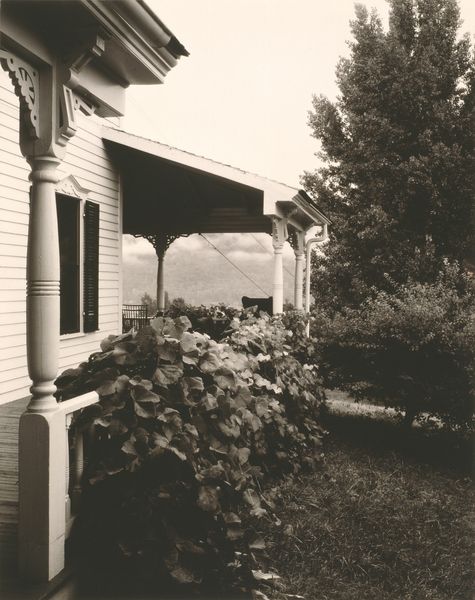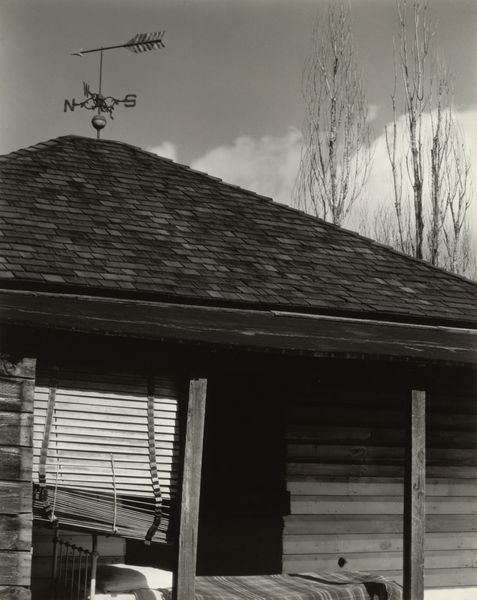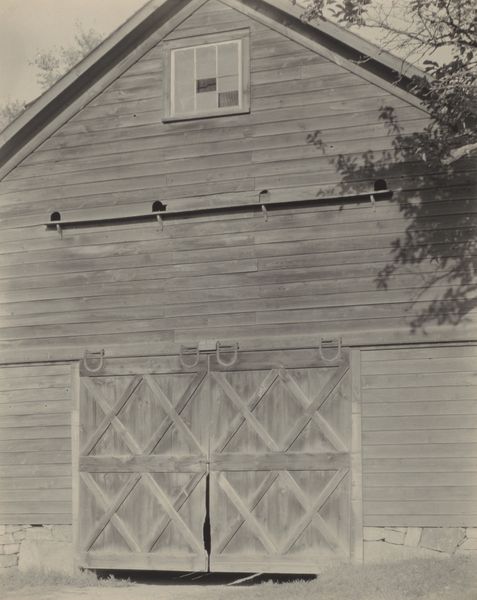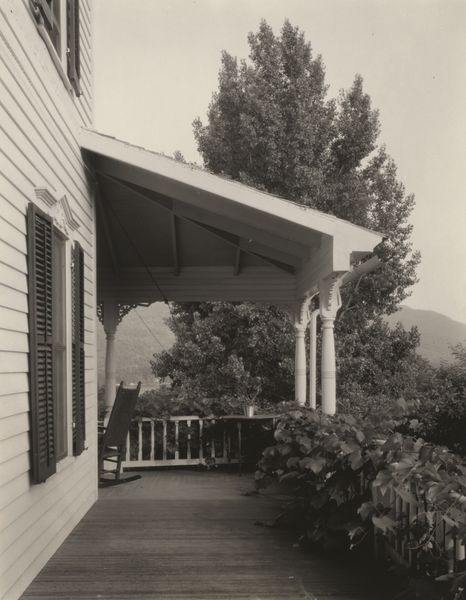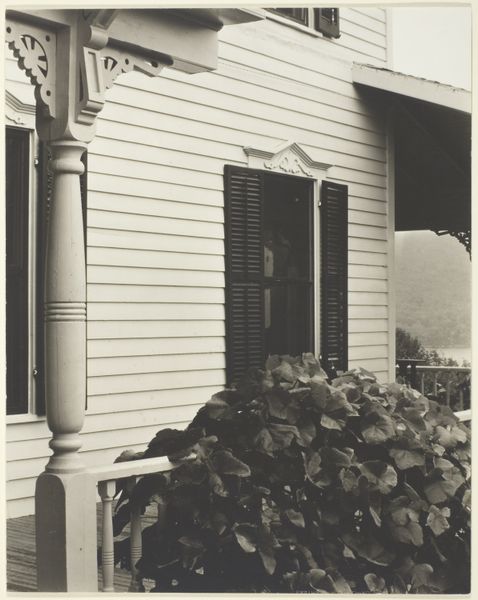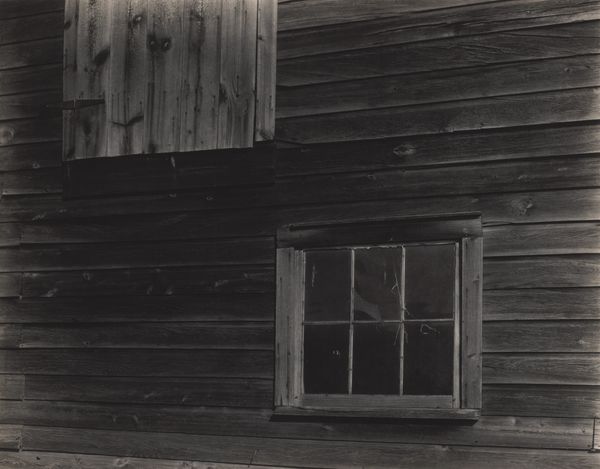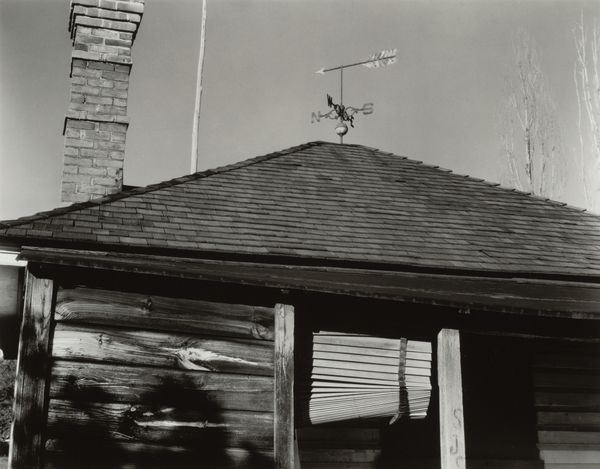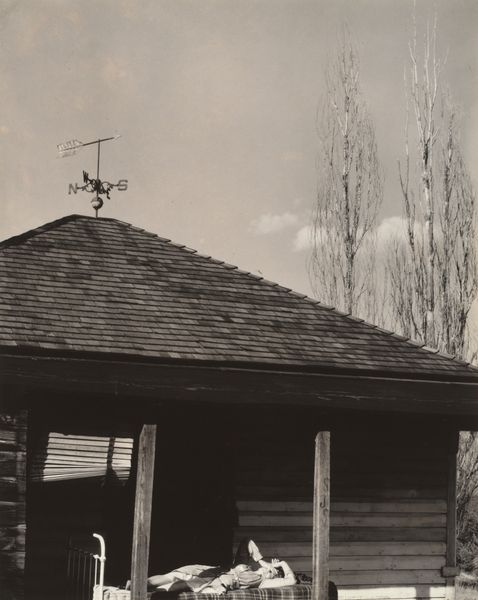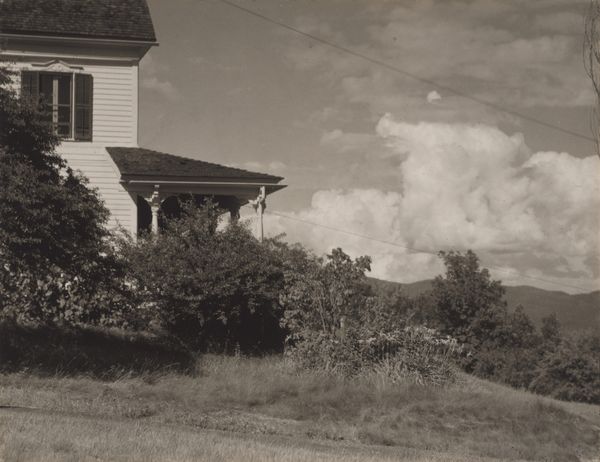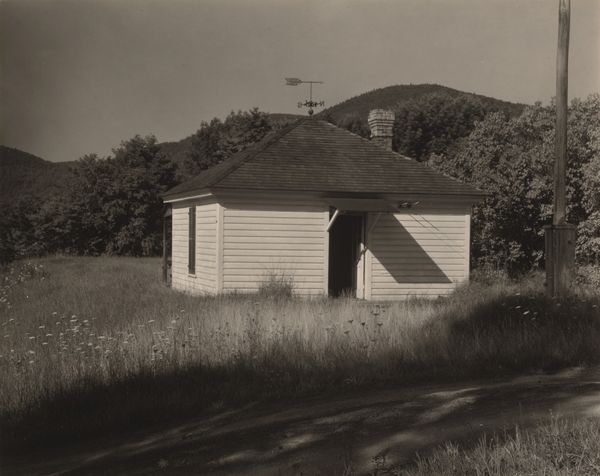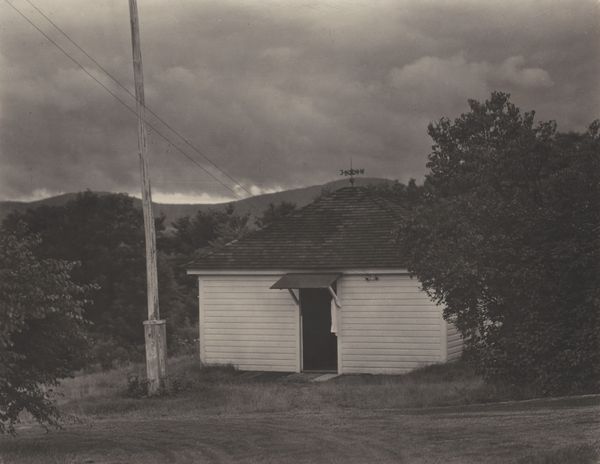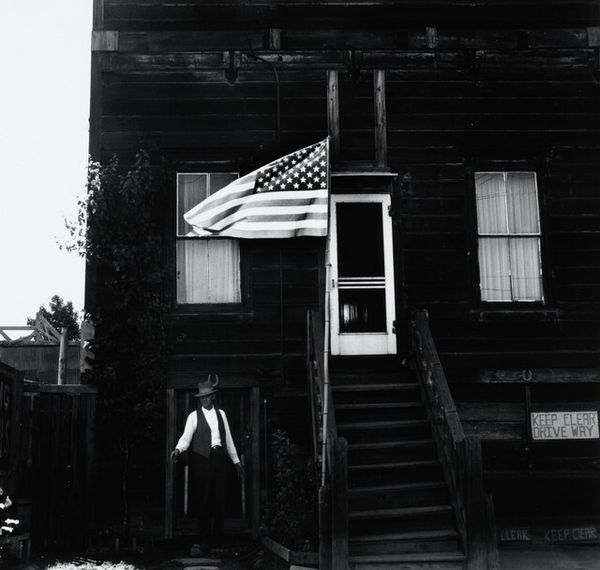
photography, gelatin-silver-print
#
black and white photography
#
landscape
#
street-photography
#
photography
#
gelatin-silver-print
#
monochrome photography
#
modernism
#
monochrome
Dimensions: sheet (trimmed to image): 11.9 × 9.2 cm (4 11/16 × 3 5/8 in.) mount: 31.6 × 24.7 cm (12 7/16 × 9 3/4 in.)
Copyright: National Gallery of Art: CC0 1.0
Art Historian: Alfred Stieglitz's gelatin-silver print, "House, Lake George," made in 1934, presents us with an evocative slice of Americana. Curator: My first impression is of the stark geometry—those strong diagonal lines created by the house's architecture against the soft backdrop of the clouded sky and gentle hill. There is something severe in the crisp monochrome that renders an austere reality. Art Historian: Stieglitz had a lifelong engagement with Lake George; his family estate was situated there, acting as a muse for a large part of his photographic works. Lake George, during that era, served as a summer retreat, particularly for artists and affluent families, away from the chaos of modern city life. There is, potentially, a psychological withdrawal depicted here. Curator: I find that interesting, as you speak of psychological withdrawal, note the composition: Stieglitz crops the image quite closely, doesn't he? It thrusts us right up against the architecture, disallowing any grand scenic vista. We only glimpse a small sliver of landscape beyond the veranda. Art Historian: The house itself emerges as a cultural symbol, beyond a mere architectural structure; perhaps standing for rootedness, family, or tradition within a rapidly transforming America. Look at how the windows with closed shutters might represent a desire for privacy or exclusion from the external world. The birds lining the overhead electrical wire act almost like musical notations on a stave; little interruptions. Curator: The tones in this silver gelatin are particularly rich; there are sharp contrasts between light and shadow. Consider that imposing veranda—it's almost theatrically lit, framing an ambiguous emptiness, yet creating a visual stage for a singular lone chair. The birds create these punctuations across an otherwise austere and unmodulated gray sky. I observe a tension in the arrangement. Art Historian: Yes, there seems to be an encoding within its details, inviting exploration beyond surface appearance. The open window reflects back towards us, showing only a fragment of the interior—a further glimpse into what remains concealed. Perhaps an expression relating to larger societal questions? Curator: Maybe we are each projecting a narrative? All the same, I find Stieglitz's photographic formalism masterful. Through tone and structure, a seemingly straightforward image becomes dense and full of questions. Art Historian: And I see in those choices a cultural snapshot, as much a document of a place as it is of an inner state. Interesting.
Comments
No comments
Be the first to comment and join the conversation on the ultimate creative platform.
